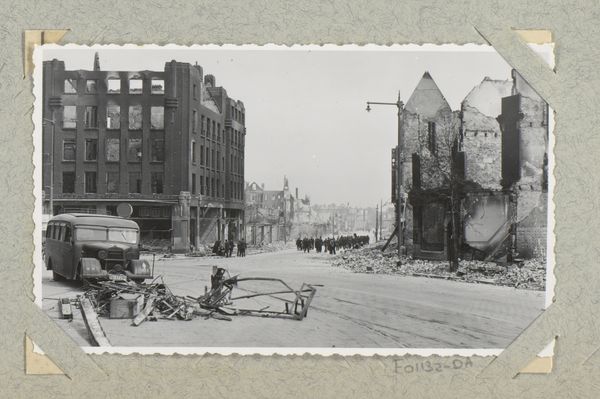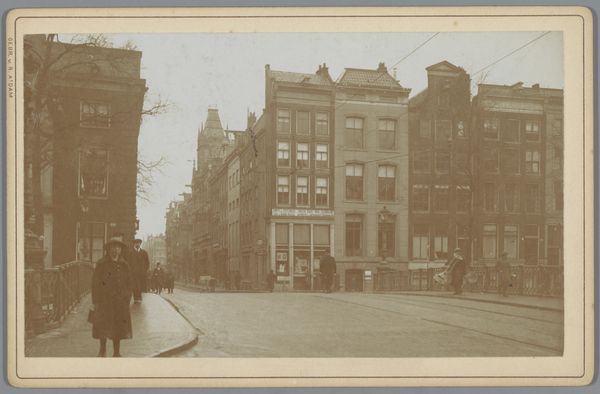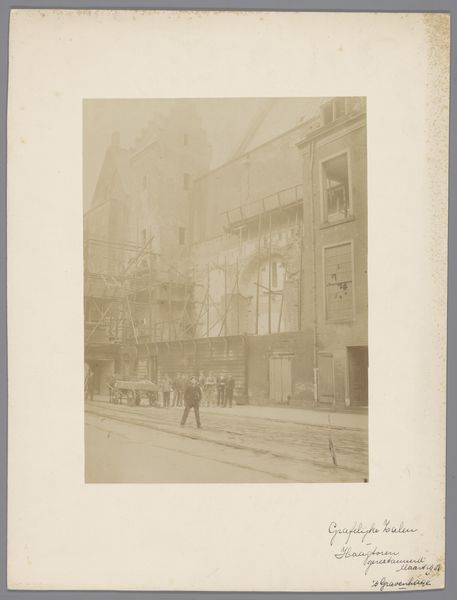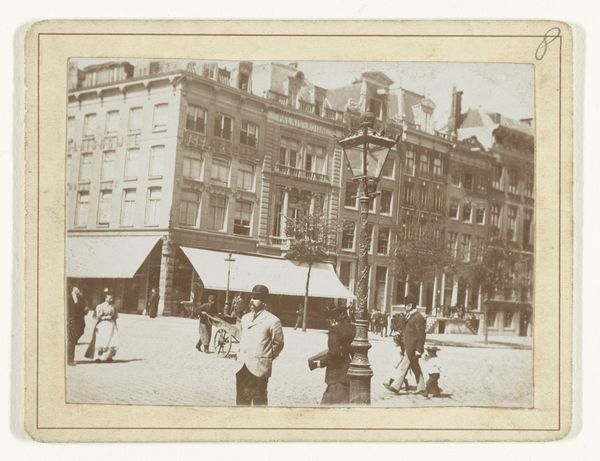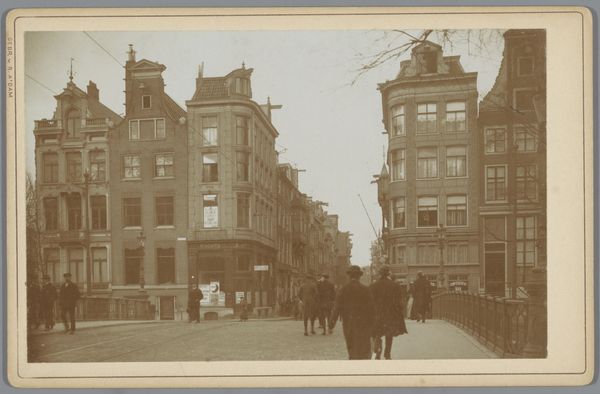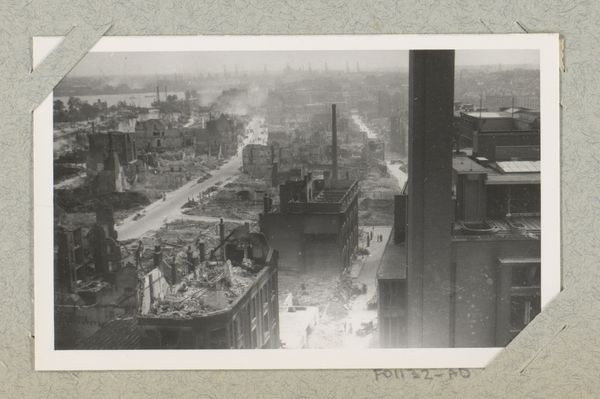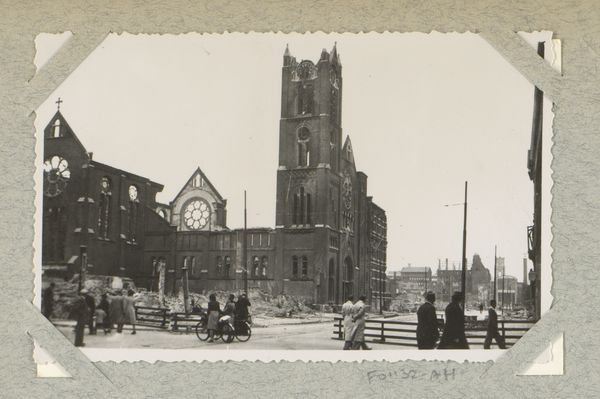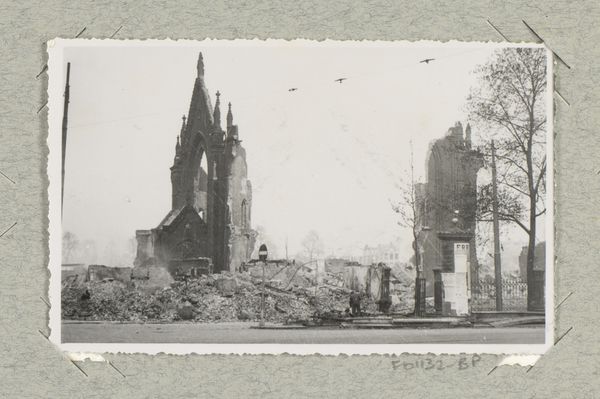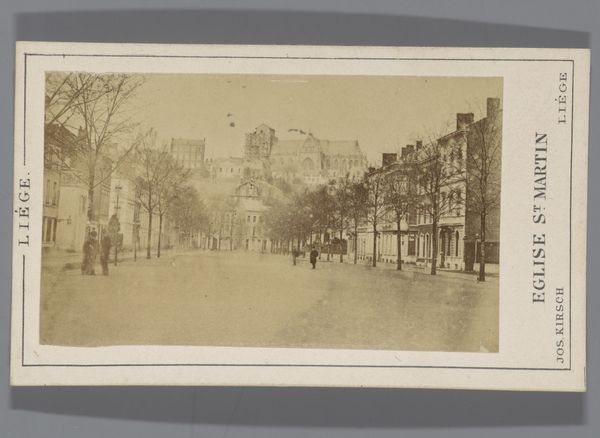
photography, gelatin-silver-print
#
photo of handprinted image
#
street-photography
#
photography
#
gelatin-silver-print
#
cityscape
#
history-painting
#
realism
Dimensions: height 88 mm, width 136 mm
Copyright: Rijks Museum: Open Domain
Curator: This photograph by J. Nolte, titled "Schade aan het Raadhuis te Rotterdam," captures the damage inflicted on Rotterdam City Hall during the Second World War, dating from approximately 1940 to 1945. It's a gelatin-silver print. Editor: The devastation is stark. It immediately brings to mind similar images I've seen of Dresden and other cities, creating a palpable sense of loss and destruction, not only of the building itself but all it symbolizes. Curator: Indeed. We see not only the physical damage wrought by the bombing but also a kind of fracturing of the social contract. The raadhuis, a very deliberate display of civic pride, reduced to rubble. Considering the technology and materials used to produce this image—the specific photographic paper, the developing chemicals—they were becoming increasingly scarce commodities during wartime, marking the constraints on everyday life during that time. Editor: I see it echoing a long history of the City Hall itself. Throughout history, the Town Hall, the City Hall, has been a primary signifier of civic power. What are the key images that endure through time about Rotterdam, and what story does that destruction narrate in their shared history and its rebuilding? It becomes a poignant reminder. Curator: Exactly. Looking at the composition and scale, the photographer has consciously framed the City Hall within a seemingly normal street scene, emphasizing the daily life continuing amongst such chaos. It subtly reminds us of the infrastructure that disappeared overnight due to war efforts consuming supplies that were normally available to city planning, forcing people to change course, redirecting the social efforts to survival, rescue, and care for the fallen, all raw labor and simple material concern at that time. Editor: Even more somber when realizing that civic identity relies on these monumental edifices that appear to stand the test of time and are often used to express a community's deepest cultural values, and also reflect the will of its inhabitants. When these symbolic markers are damaged, they create wounds far beyond mere architectural impairment. Curator: Absolutely. Analyzing the image as a historical object rooted in material scarcity reminds us that our access to documenting reality, as a choice or access of free expression is a key element of freedom. Editor: Thinking about the symbolism, this picture serves as a potent historical record about a culture destroyed. The raadhuis as a symbol of a lost and shattered world in pieces of a destroyed building as testament.
Comments
No comments
Be the first to comment and join the conversation on the ultimate creative platform.
